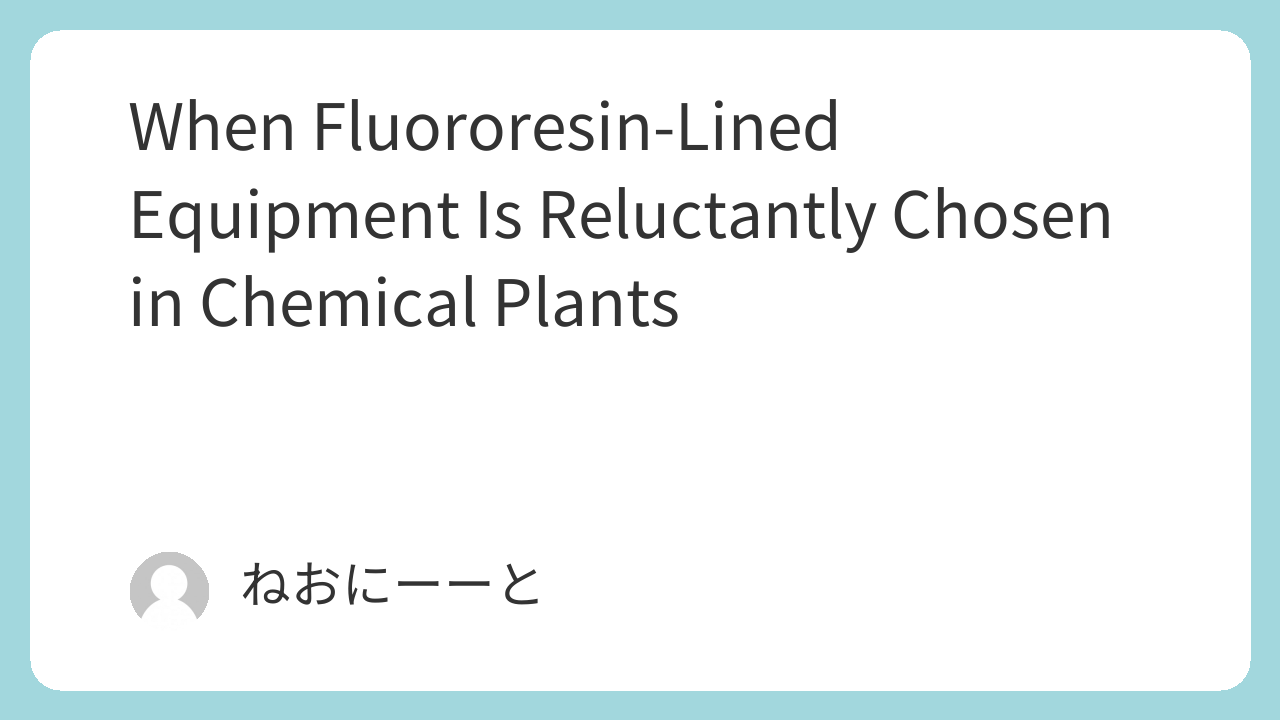Fluororesin-lined equipment offers exceptional corrosion resistance.
However, in many chemical plants, it is not a first-choice material.
It is often selected only when other common options—such as glass-lined vessels or metal alloys—are impractical, too costly, or simply cannot survive the process conditions.
This article explains the real-world, often reluctant reasons why fluororesin linings are chosen.
1. Extremely Corrosive Fluids and Short Operating Periods
Fluororesin lining shines when handling highly corrosive liquids.
In practice, engineers usually attempt to use glass-lined equipment first. If corrosion is too severe and high-grade metals are too expensive, fluororesin becomes the fallback option.
Despite its relatively low initial cost, fluororesin lining does not offer low running costs.
Aging plants especially feel this burden during inspection and replacement cycles.
As a result, fluororesin-lined equipment tends to be selected only when:
- The fluid is extremely corrosive, and
- The production period is not long-term
This combination makes it a “reluctant but necessary” choice.
2. Small Variations in Temperature and Pressure
Because fluororesin is bonded to a metal substrate, significant temperature or pressure swings can damage the lining.
In continuous processes where conditions remain steady, fluororesin may work without issue.
However, in batch operations—where daily temperature and pressure fluctuations are normal—the risk of premature degradation rises.
In many facilities, this uncertainty leads decision-makers to choose glass-lined equipment instead, simply because it has a longer and more predictable track record.
3. Low Risk of Static Ignition and Dust Explosion
Fluororesin linings can accumulate static electricity, which means higher risks in processes involving organic solvents or fine powders.
While glass-lined equipment has similar concerns, it is generally considered safer from a static standpoint.
Plants that routinely manage ignition risks often prefer glass linings for this reason.
Therefore, fluororesin is usually chosen in plants where:
- Organic solvents are minimal, or
- The process mainly involves acids or alkaline solutions
These limited situations make fluororesin a niche option rather than a universal one.
Conclusion
Fluororesin-lined equipment is rarely selected enthusiastically.
Instead, it is chosen when:
- Corrosion is too severe for glass lining
- Metal alloys are too expensive
- Temperature and pressure conditions remain stable
- Static ignition and dust explosion risks are low
Understanding these practical, often reluctant reasons helps engineers make informed material-selection decisions.

Comments